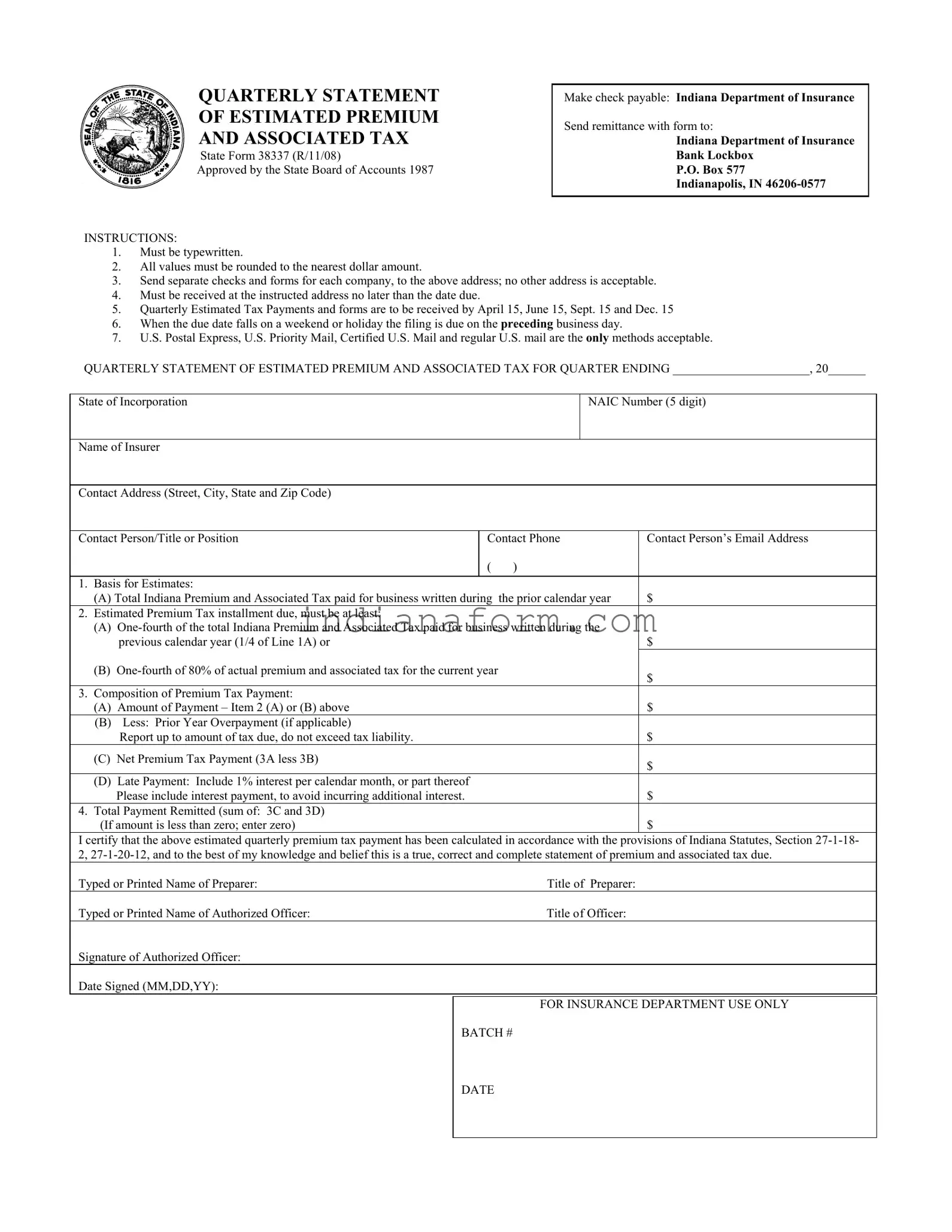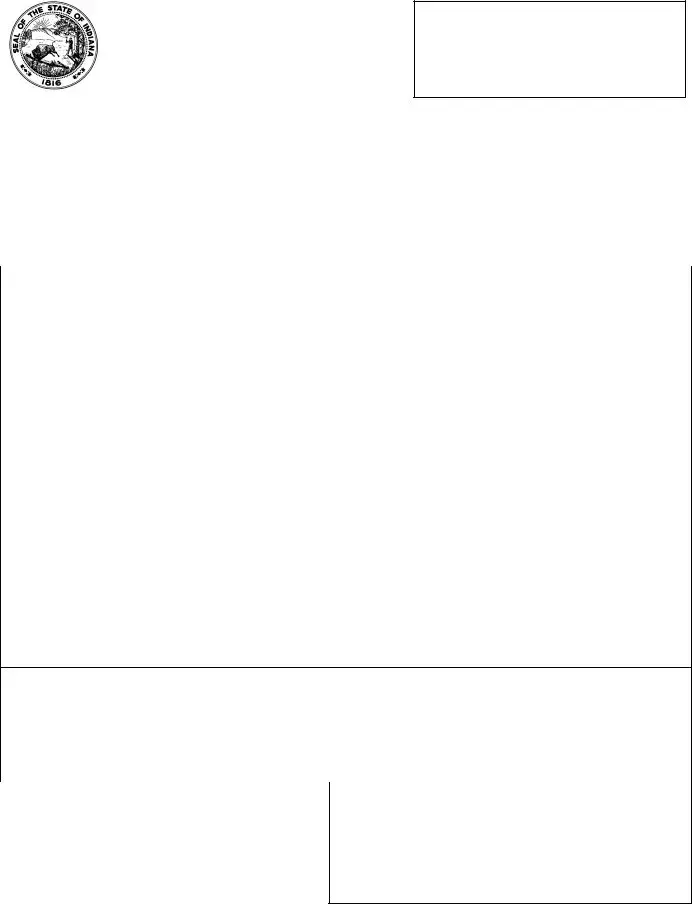What is the State 38337 form used for?
The State 38337 form is used by insurance companies to submit their quarterly statement of estimated premium and associated tax to the Indiana Department of Insurance. This form helps in calculating and remitting the due taxes for insurance premiums collected within Indiana.
How should the State 38337 form be prepared?
This form must be typed and rounded to the nearest dollar amount to ensure accuracy. It's important to follow the instructions carefully to avoid errors in submission.
Where and to whom do I make the check payable when submitting the State 38337 form?
Make the check payable to the Indiana Department of Insurance. Ensure that your remittance, alongside the completed form, is sent to the specified Bank Lockbox address in Indianapolis, as indicated on the form.
Are there specific deadlines for submitting the State 38337 form?
Yes, the quarterly estimated tax payments and forms must be received by April 15, June 15, September 15, and December 15. If the due date falls on a weekend or holiday, the submission is due on the preceding business day.
What if I have multiple companies? Can I send one check and form for all?
No, you must send separate checks and forms for each company. This ensures that each company's payment is accurately processed and recorded.
What methods of mail are acceptable for sending the State 38337 form?
The only accepted methods of mail are U.S. Postal Express, U.S. Priority Mail, Certified U.S. Mail, and regular U.S. mail. Using these methods ensures your submission is received securely and on time.
How is the estimated premium tax installment calculated?
Your estimated premium tax installment can be calculated in two ways: either as one-fourth of the total Indiana premium and associated tax paid for business written during the previous calendar year or as one-fourth of 80% of the actual premium and associated tax for the current year. Choose the method that applies to your situation.
What should I do if I have made an overpayment in the previous year?
If there's been an overpayment, you can deduct this amount from your current payment due. However, the report up to the amount of tax due should not exceed your tax liability.
What happens if my payment is late?
In case of a late payment, include 1% interest per calendar month, or part of a month, on the overdue amount to avoid incurring additional interest. This helps to cover the state's administrative costs for late submissions.
Who needs to sign the State 38337 form?
The form must be signed by an authorized officer of the insurance company. The signature, along with the officer's title, certifies that the information provided is accurate and calculated in accordance with Indiana Statutes.

